Bueller. Bueller. Bueller---Actually, it's "Detective" Bueller.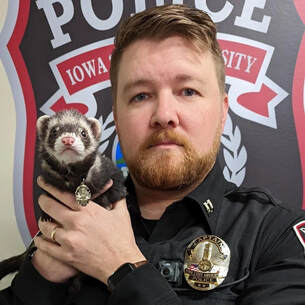 Meet Ferret Bueller! - Iowa State University’s police department’s drug sniffing ferret. What got started as an “April Fools’” joke, hit social media big time! From the unversity website: : "ISU Police created a social media sensation with an April Fools' joke viewed by millions. On April 1, the police department posted on its Facebook page a picture of support services Capt. Zack McVey holding the newest addition to the force: Ferret Bueller. The ferret, given the honorary rank of detective complete with a mini police badge, was hailed as a narcotic-detecting ferret, less expensive to train than a drug-sniffing dog and capable of getting into small spaces. The post exploded in popularity with more than 6,700 likes, nearly 5,000 comments and 29,000 shares to date. "We were not expecting this at all," McVey said. "We are at 4.4 million profiles on Facebook that have viewed the post and counting." The joke left many wondering if a ferret -- one of two owned by public safety officer Tim Murphy -- could perform drug-sniffing duties. That was quickly debunked in a post the next day, this time with Bueller sporting an ISU Police red vest. Bueller got an assist from the department's two certified therapy dogs, Zosia and Zeb, for the miniature badge and vest -- both extremely popular among Facebook commenters." https://www.inside.iastate.edu/article/2022/04/28/Bueller Tuesday, April 2, 2024 is NATIONAL FERRET DAY. - Celebrate accordingly! ABOUT NATIONAL FERRET DAY: The origins of a National Ferret Day are unclear. It is not listed in the federal records as of 1994, however, it has been on the US calendar of the National Special Events Registry listing special holidays, since 1995 according to John Kremer, president of Open Horizons, the company that operates the registry. “International Ferret Day” The US is not the only country that observes a National Ferret Day-- nor is April 2 the only calendar date reserved for its observance. Reference to its occurrence in February can be found on the Internet, and May 5th has been recognized for National Ferret Day in the United Kingdom since 2007, established by the Ferret Education and Research Trust (FERT). Regardless of its origins, National Ferret Day can be celebrated in any way you choose to recognize the Ferret as a wonderful pet and member of the household. How will you celebrate National Ferret Day this year?
Recognizing the Black footed ferret: https://medium.com/wild-without-end/happy-national-ferret-day-b96ab768ac4f 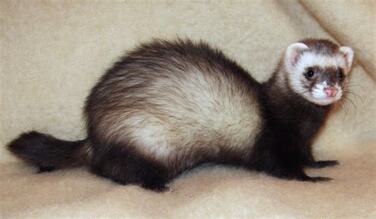 Denver, CO: State house bill HB24-1163 aimed at creating an online pet registry for the state of Colorado has just been postponed indefinitely. State representative Regina English (D-El Paso County, CO) told FOX21 the original idea behind the pet tax was inspired by concerns for senior citizens and their pets. However, in less than a week after being introduced, State Rep English had it pulled it from the docket after receivng death threats over the proposed legislation. As written the bill would have required a yearly fees:
This bill would have placed an enormous burden on ferret shelters, breeders, and multi-ferret households. Had it passed, the bill would have made it unlawful to:
The proposed bill would recommend pet owners designate a caregiver for their pets in the event the owner is unable to do so. If a designated caretaker cannot be located or refuses to take custody of the animal, the pet will be taken to the animal shelter. Originally scheduled for to be heard on February 22 at the state's capitol in Denver, the "Pet Registration" bill is now postponed indefinitely. “I can confidently say that this bill is dead,” Rep. English said. READ MORE>> NEWS Reaction to Colorado State Pet Registration Bill. Case REport 2301: SYSTEMIC INFECTION IN A DOMESTIC FERRET - DIAGNOSTIC DILEMMA 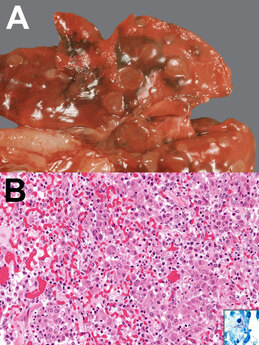 In October 2022, a dark-eyed white female spayed ferret experienced difficulty walking and breathing. The following Case Report is based on the owner's perseverance to uncover the cause of the ferret's condition. At the start of her clinical signs, the ferret was estimated to be around 5 years of age. When young she had been a rescue in the Los Angeles area. Since it is illegal to sell ferrets in California, absent commercial breeder identifiers (ear tattoos, etc.), the ferret was assumed to come from a local private breeder. By history the ferret took walks with her owner in the dusty Southwestern United States. Prior to the current illness, the ferret had been diagnosed with adrenal disease managed with hormonal implants. She was also being treated with an oral steroid drug, prednisolone, for symptomatic low blood glucose (hypoglycemia), which was likely due to insulinoma, a condition commonly found in domestic ferrets. Although she had a history of Aleutian’s disease, the AD virus was considered no longer active. On veterinary examination, the ferret was febrile with difficult breathing. Multiple lung masses were noted on radiologic examination, along with a pleural effusion (liquid in the lining of the lungs) and enlarged lymph nodes in the spleen and abdomen. She was considered a poor candidate for surgery, and surgical biopsies were not taken. Instead lymph aspirates were taken of the spleen and abdomen which showed increased cellular activity in the lymph notes, indicating either infection or inflammation, in the absence of lymphoma. Further testing also ruled out Coccidiomycosis (“Valley Fever”), a fungal infection. Over several months, the ferret was hospitalized twice for short-term courses of antibiotics (not described). Treatment was reported as "successful" in resolving the respiratory signs. Although she tolerated the treatment well, over time her condition continued to decline, and the owner made a decision to euthanize. On necropsy lymphadenopathy and monocytosis were reported. The report concluded that there was “multi-system pyogranulomatous disease affecting the kidneys, lymph nodes, spleen, and vessels most severely with milder disease in the liver and pancreas.” This condition can result from viral, fungal, and bacterial infection and, therefore, further testing was undertaken. Aleutian mink virus is known to cause multiorgan failure due to pyogranulomatous changes; however, this possibility was ruled out. Ferret systemic coronavirus was also eliminated. This was based on a coronaviral immunohistochemistry assay designed for feline mutated enteric coronavirus (also known as FIP) that targets specific viral proteins shared by both ferret and feline coronaviruses. Microscopic examination of the tissue lesions showed no evidence of fungal organisms, leaving bacteria as the presumptive cause of the infection. In-house aerobic culture of frozen renal tissue was reported out as “no bacterial growth after 48 hours” and also “no aerobic growth at [over] 5 days.” Routine testing includes the “acid fast” stain test, which should be positive in presence of mycobacteria (a group that includes tuberculosis). Further microscopic examination revealed “pyogranulomas with acid-fast stained, thin, linear, multifocally branching organisms suggestive of Nocardia.” Another candidate with similar microscopic appearance, Actinomyces, was eliminated due to the fact that it is “acid-fast” negative. Furthermore a polymerase chain reaction (PCR) assay for mycobacteria also proved negative. Tissue samples were cultured up to 14 days for the Nocardia bacteria did not return definitive results. A PCR assay would be next on the list, but this assay was not readily available at the institution. FINAL DIAGNOSIS When PCR was later performed, testing identified Mycobacterium celatum (MC), which, like Nocardia, has an acid-fast stain and is found in soil, waterways, and dust. COMMENTARY: MC is a slow growing potentially pathogenic mycobacterium. Initially described in 1993 in immunocompromised humans with the HIV-AIDS, MC infection has resulted in death in both immunocompetent and immunocompromised patients. Initial clinical presentation includes cough, malaise, and weight loss, associated with cavitary lesions and pulmonary infiltrates on xray. [Jun 2010] MC infection has also been previously reported in domestic ferrets. [Ludwig 2011, Piseddu 2011] Gross and histologic presentations from the lung tissue of a 3-year neutered male domestic ferret are shown in the following Figure. Figure: Gross (A) and histologic (B) appearance of lung tissue in a domestic male ferret infected with M. celatum [From Ludwig 2011; CDC.gov] A) Gross appearance: multiple, round light brown foci over lungs. B) Histologic appearance, granulomatous pneumonia: alveoli filled with foamy macrophages, epithelioid cells, and a multinucleated giant cell; also mild interstitial infiltration with lymphocytes, plasma cells, and neutrophils. Hematoxylin and eosin staining, original magnification x200. Inset, slender, rod-shaped, acid-fast bacilli in the cytoplasm of epithelioid cells; Ziehl-Neelsen staining, original magnification x400. Clinically relevant mycobacteria species in ferrets are M. genavense and M. microti, among others. In Europe, naturally occurring mycobacterial infections in ferrets are rare; but in New Zealand, M. bovis or M. avium complex infections in ferrets are common. [de Lisle 2008] This case appears to be the first MC infection documented in the United States in a domestic ferret. Diagnosis in the face of nonspecific clinical and radiographic findings was challenging. In addition, the laboratory and pathologic findings were compatible with numerous infectious pathogens of viral, fungal, and bacterial origin. Initial testing ruled out active viral infection due to ADV or to a coronavirus. Further testing ruled out Coccidiomycosis, and microscopic examination at postmortem further excluded the presence of fungal infection. Refocusing on a bacterial etiology, cultures and special stains were performed. Laboratory diagnosis of bacteria is based on microscopy and culture isolation. In this case, initial microscopic assessment showed: “pyogranulomas with acid-fast stained, thin, linear, multifocally branching organisms suggestive of Nocardia.” But Nocardia can be easily mistaken for Mycobacterium: not only does Norcardia grow in specific media for mycobacteria, but Nocardia also form partially acid-fast beaded branching filaments, similar to those formed by rapidly growing mycobacteria. From Muricy [2014]: “Change in cell morphology of Nocardia depending on the age of the culture may….lead to misidentification. Young cultures exhibit branched-long filaments, while old cultures present bacilli and cocci originating from fragmentation of filaments, which can be considered mycobacteria bacilli for non-expert microscopists.” In addition [Ibid.]: “Despite the Ziehl Neelsen method having been used for strong acid fast bacteria, such as the Mycobacterium species, and the modified Ziehl Neelsen method for weak acid fast bacteria, such as the Nocardia species, [in one study] Nocardia [was detected] by the Ziehl Neelsen method used for mycobacteria. This fact shows the importance of an expertise reading, since both genera can be detected.” Colony morphology from many species of Nocardia may be confused with mycobacteria, making diagnosis difficult. Moreover, microscopic analysis must be carefully performed by experienced technicians, as Nocardia can be misidentified as mycobacteria in the routine diagnosis of TB. In such cases, differentiation is performed by observation of aerial hyphae, produced only by species of the genus Nocardia. Diagnosis of Nocardia based on phenotype (appearance) alone can result misidentification. In a study comparing 6 isolates of Nocardia to Mycobacterium, only 2 were correctly identified by phenotypic identification. In such cases PCR and molecular species typing “by 16S rDNA sequencing seem to be essential for an early and definitive diagnosis.” [Ludwig 2011] In the case of this ferret, her history of comorbidities (adrenal and pancreatic cancers), as well as chronic steroid treatment likely resulted in her being immunosuppressed. Correct identification of the causal agent is very important, as it informs the correct course of therapy. Mycobacteria respond to different drugs from those used to treat Nocardia. Even so, “mixed” infection – cases in which both Nocardia and mycobacteria species were identified--have been found in immunocompetent patients. [Muricy 2014] Therefore, in the case of treatment failure, further bacteriological investigation is warranted. [Link to PDF] REFERENCES:
Ferrets Lead the Way TO A Universal "Flu" vaccine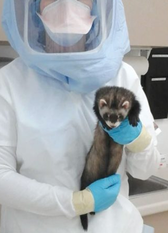 Sep 2023: Each year the influenza ("flu") virus infects 3 to 5 million people globally, resulting in 290,000 to 650,000 deaths (World Health Organization). New flu virus strains appear each year, so a new vaccine must be made to match those strains predicted to be most likely to cause flu during the current year's flu season. As a result, flu vaccine efficacy has varied widely from year to year. Domestic ferrets are known to catch the flu and are, therefore, the animal of choice to test safety and efficacy of new flu vaccines. PDS Biotechnology Corporation, a New-Jersey-based company, announced that its data in ferrets with its investigational flu vaccine PDS0202 is to be presented at the European Scientific Working Group on Influenza conference (Sep 17-20, 2023, Valencia, Spain). In its goal to produce a “universal” flu vaccine—one that could eliminate the need to create a new flu vaccine every year, the company tested PDS0202 in ferrets. Ferrets with no prior immunity against the influenza virus (“pre-immune”) were exposed to the H1N1 and H3N2 flu viruses, two well-known strains from the last decade. The animals were monitored to see if they produced blood (seroprotective) antibody responses against these two strains. The investigational PDS0202 vaccine represents a new generation of flu vaccines. Based on the company’s proprietary Infectimune™ technology with proprietary Computationally Optimized Broadly Reactive Antigen (COBRA) hemagglutinin (HA) flu proteins, the new flu vaccine may be able to provide long-lasting and broad protection against multiple strains of the virus. Prior lab studies demonstrated that PDS0202 can produce a strong immune response: broadly neutralizing influenza-specific antibodies, flu-specific CD4 (helper) and CD8 (killer) T-cells, as well as long-lasting memory T-cells. This well-characterized and robust immune response to the COBRA antigens suggests good potential for broad and long-term protection against multiple strains of influenza. The data will be presented at the European Scientific Working Group on Influenza (ESWI) Conference. ESWI, to be held September 17-20, 2023, in Valencia, Spain, with the hope that future human trials will soon follow. For more information, see: Does Your Ferret Have Ear Mites?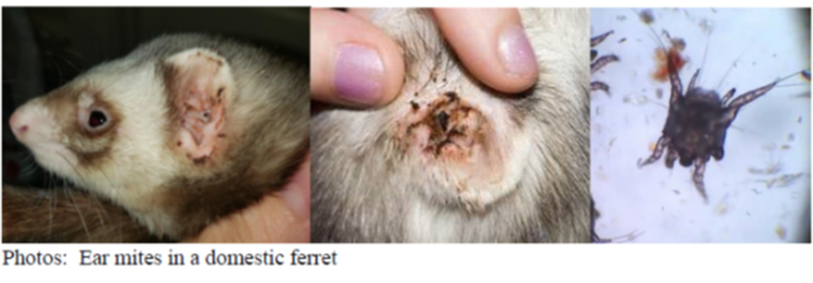 Ferrets, like other mammals, normally have ear wax (cerumen). “Normal” ear wax in ferrets is light brown, orange, or reddish in color. Itchy dark-reddish to brown ear wax with black spots in or around the ears may indicate your ferret has “ear mites.” Ear mites are tiny spider-like external parasites of the species Otodectes cynotis. These mites can infest the ears of warm-blood mammals, including dogs, cats, ferrets, rodents and rabbits. Generally they do not infest humans. Signs Aside from the appearance in the ear, ferrets may respond to the itchiness with frequent scratching and rubbing of the head, head shaking, or even walking with the head tilted to one side. Diagnosis A trip to the veterinarian will identify if your ferret has ear mites, or if something else is causing these signs. A sample of your ferret’s earwax is examined under a microscope. It can show the presence of these tiny mites or their eggs. Treatment Ferrets can be treated with drugs in the form of ear drops, such Ivermectin, or the topical application of Selamectin. Selamectin, (also known as Revolution® - Zoetis, Selarid – Norbrook, Senergy - Virbac) is an oily drug that is applied and rubbed into the skin on the ferret’s back between the shoulder blades. It will spread over to the ferret’s ears. These medications should ONLY be used under the guidance of a veterinarian familiar with ferrets. Prevention Treatment alone is not enough. If your ferret has ear mites, it will be important to clean the ferret’s bedding, toys and cage. If the infected ferret has cage mates, or if there are other animals in the household, these, too, should be checked for ear mites and treated as recommended by the veterinarian. Further reading: Miller D, et al. Efficacy and safety of selamectin in the treatment of Otodectes cynotis infestation in domestic ferrets.” The Veterinary Record. vo1 l59, 2006. Patterson C. Selamectin use in companion animals. Today’s Veterinary Practice. Aug 4, 2021. [article does not mention ferrets] https://todaysveterinarypractice.com/pharmacology/selamectin-use-in-companion-animals/ Accessed July 2023] Rich G, Axelson R. Ferrets - Ear Mites. VCA Animal Hospitals. https://vcahospitals.com/know-your-pet/ferrets-ear-mites [Accessed July 2023] Looking for a ferret friend to add to your “business”? Beware of those who promise ferrets – but are out to defraud you! Here’s how to avoid being scammed:
Never Prepay Scammers will often ask for a pre- or down payment to hold the pet for you. They will ask to be paid through services such as Venmo, Paypal, CashApp, etc. NEVER DO THIS! Never pay for a pet until you have it in your hands, you have examined it, and you are taking it home. Asking for a prepayment: this is a RED FLAG for fraud. Location “Switch” You contact the site and are told that the pet is at a different location than advertised. This is HIGHLY SUSPICIOUS. Usually the scammer will demand a down payment so that they can secure the pet for you and arrange for some kind of transport to your location. Say "NO" - this is a RED FLAG. Visit the Facility Request to visit the facility and meet the pet. This allows you to see the state of the facility and the animal. Even if you are not located in the area near the animal facility, you can say that your friend or family-member can stop by. If they refuse to allow a visit at the animal's location: this a RED FLAG. Animal is to be Shipped to You. Reputable breeders, shelters, welfare organizations and even pet stores and other retailers do not ship ferrets to noncommercial recipients. If shipping is discussed: this is a VERY BIG RED FLAG. Do Your Own Check Ask for the full name and street address of the individuals you are dealing with. Check to see if they are “real."
Search for REVIEWS online. If you are having doubts or questions, often others have seen the same ads or invitations, and their experiences are important. Make sure that the organization is “real” and not impersonating another organization. This can require a phone call to the named organization you think you are dealing with. If you cannot confirm the association, do not pursue the transaction. There will be other opportunities to locate your next ferret! Note: If you come across a scam regarding ferrets, let us know! Contact: [email protected] . 40,000 Minks Released From Ohio Fur Farm By Anti-Fur Activitists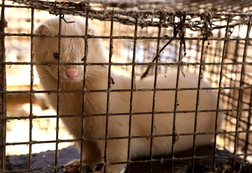 Caged Farm Mink Caged Farm Mink Dec 1, 2022: An estimated 40,000 minks were released from an Ohio fur farm by activists who smashed their enclosures. The Van Wert County Sheriff’s Office released a statement on social media to alert local residents. It said that the Lion Farms USA fur facility had been broken into. A later update revealed many of the minks had been recaptured, although around 10,000 remained unaccounted for. The mink that were raised and kept in captivity are unlikely to survive on their own, farm manager Eddie Meyer said. Meyer told news site WANE that he expected 95 percent of them to die within a few days. Today there are about 250 mink farms in the United States, producing in the region of 3 million pelts (whole animal skins, including the fur) every year. Typically they supply the fashion sector, which makes coats and garment trims from mink fur. Minks raised on farms are not covered by the US Animal Welfare Act or the Humane Slaughter Act, and care for these mustelids is thought to be largely thought to be nonexistent. Animals are frequently caged in small, empty wire boxes, stacked on top of each other. This allows farmers to cram the maximum number of animals into any given space until they are ready to be slaughtered and skinned. Sheds housing the animals are frequently overcrowded, hot, and free from stimulation. This results in many animals self-mutilating to try and free themselves or attacking others. Injuries are not treated, and animals are often left to die slowly and in pain. Common execution methods include anal electrocution, cervical dislocation, and mass gassings. Unsafe Conditions means Vectors of Disease In addition to ethical concerns, mink farms are hotspots for disease transmission. Due to the cramped and filthy conditions, illness can spread quickly through mink farms. This was observed during the height of the COVID-19 pandemic, with farms reporting mass infections around the world. Millions of minks were killed as a result, with more than 15 million being executed in Denmark in 2020 alone. In addition, multiple regions around the world implemented bans on mink fur farming to stem the zoonotic disease risk. Sweden, British Columbia, Hungary, and Italy are notable inclusions. Ohio’s unidentified animal activists The activists responsible for freeing the 40,000 minks in Ohio reportedly spray-painted the letters “ALF” on the farm. This could stand for activist organization the Animal Liberation Front (also known as the ALF), which claimed credit for a previous release of 1,000 minks in Ohio. However, the ALF has not yet received a claim for this incident. As a decentralized activism collective, individual members of the ALF carry out actions designed to free animals from captivity. Nobody is in charge of organizing the group, and activities can be claimed by individuals, usually anonymously, after the fact.
|
| Join us live online to learn more about how and where to purchase or adopt a pet ferret, and key facts and information about your pet ferret. PROGRAM Basic Ferret Facts
Keeping your Ferret Healthy and Happy
(not a veterinarian) REGISTER TODAY |
>>> DONATIONS APPRECIATED <<<
allFerrets is a nonprofit 501(c)(3) organization
Copyright allFerrets 2022
allFerrets is a nonprofit 501(c)(3) organization
Copyright allFerrets 2022
June 2022: Summer is a great time to catch up on reading. Whether by the pool, or in park with a picnic basket. Two new books on ferrets are just right for young readers, which are reviewed, below:
| My Name is Musky! A Ferret's Story - author Matty Guiliano; illustrator Morgan Spicer. [Humane Press - ISBN: 978-0-578-53532-6; 2022] Mr. Guiliano is a retired Animal Cruelty Officer, who conducted thousands of investigations during his career in New Jersey. The book is about Musky, the author's first ferret. Beautifully illustrated, the story revolves around a little white ferret with black eyes who was abandoned by the side of the road. Musky, as he becomes known, survives the ordeal and finds a "forever" home. The author has also developed a Humane Education program for students and educators: "A practical understanding of how animal shelters operate and the individual--and community-- role students can play in successful outcomes for homeless animals." To purchase: mynameismusky.com | The Antics of Carrot the Ferret - author & illustrator June Van Klaveren [June Van Klaveren-ISBN: 978-0-9744349-3-3; 2022] Ferrets are cute creatures, but what is it like to own one? The fun and humor of owning a pet ferret is captured in this picture book. Told in verse, the story is based on experiences of a 'first-time' owner with a ferret named "Carrot" ("because he is orange with a pointy tail"). A full page of Fascinating Ferret Facts is included. Readers should also study the pictures: hidden within the illustrations is a small carrot. Report your findings online and you will receive a surprise in a email from the book's author! Written in verse and brightly illustrated, the book is designed to encourage literacy and makes a great, fun book for all readers - young and old alike. To purchase: allferrets Marketplace: Books |
Wild Otters take over the City-State of SingaPore
With the quiet of the streets during Covid, a sleek brown fur-bearing mustelid has taken over the city of Singapore. The financial capital of Asia was not prepared to be invaded by families of otters, who have taken over the streets, parks, beaches, private swimming pools and many public places throughout the city.
Several years ago, Singapore was making efforts to protect the smooth Asian otters. The mustelid’s return to the Singapore waterways was “hailed as a conservation success story and vindication of the government’s efforts to turn the manufacturing powerhouse into a lush ‘garden city' envisioned by the country’s founding prime minister” reports the Wall Street Journal (Dec 17, 2021). For the past decade wild otters were making their way from the outlying islands surrounding Singapore to the city's center. A 2019 national parks newsletter called the water-loving animals the “new citizens,” noting that Singapore itself has historically been a nation of immigrants. In 2016, Singapore hosted the 13th International Otter Congress, a gathering of "otter experts” who greeted the arrival of the 3-foot slinky animals as “the return of the otters.”
Several years ago, Singapore was making efforts to protect the smooth Asian otters. The mustelid’s return to the Singapore waterways was “hailed as a conservation success story and vindication of the government’s efforts to turn the manufacturing powerhouse into a lush ‘garden city' envisioned by the country’s founding prime minister” reports the Wall Street Journal (Dec 17, 2021). For the past decade wild otters were making their way from the outlying islands surrounding Singapore to the city's center. A 2019 national parks newsletter called the water-loving animals the “new citizens,” noting that Singapore itself has historically been a nation of immigrants. In 2016, Singapore hosted the 13th International Otter Congress, a gathering of "otter experts” who greeted the arrival of the 3-foot slinky animals as “the return of the otters.”
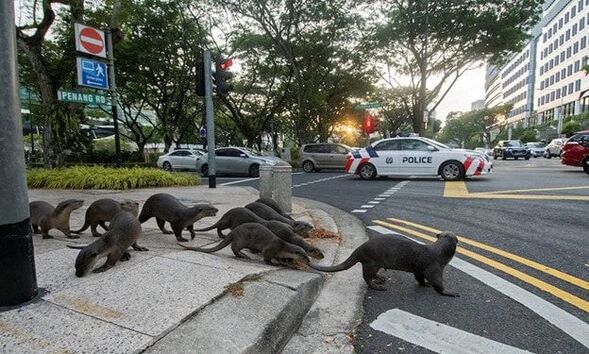 Zouk Otter family uses the cross-walks
Zouk Otter family uses the cross-walks Although natives and tourist stop to take their photos, not all residents are thrilled with the new settlers. With populations now in the hundreds, locals have had run-ins when jogging or bicycling, bites have been reports, as well as missing ornamental carp from local pounds and lakes.
One local citizens’ group, Ottercity which is supportive of the furry residents, has been following the “Zouk,” a wandering family of more than a dozen otters, that was displaced by stronger families and is continuing its search for a permanent home in the City State. The Zouks, so named because the original family was first noted at the location of "Zouk," a prominent Singapore nightclub, are considered the world's most “urban-adaptive” otters.
To watch the otters in action, view the BBC Video: https://www.youtube.com/watch?v=J7f6s2g8C0I
One local citizens’ group, Ottercity which is supportive of the furry residents, has been following the “Zouk,” a wandering family of more than a dozen otters, that was displaced by stronger families and is continuing its search for a permanent home in the City State. The Zouks, so named because the original family was first noted at the location of "Zouk," a prominent Singapore nightclub, are considered the world's most “urban-adaptive” otters.
To watch the otters in action, view the BBC Video: https://www.youtube.com/watch?v=J7f6s2g8C0I
Details
Archives
April 2024
February 2024
November 2023
September 2023
July 2023
December 2022
July 2022
June 2022
May 2022
January 2022
December 2021
November 2021
August 2021
April 2021
March 2021
February 2021
January 2021
November 2020
July 2020
March 2020
January 2020
December 2019
August 2019
April 2019
March 2018
October 2017
Categories
All
Archived
Automobiles
California
Cars
Companion
Ferrets
Grieving
Legal
Travel
Washington DC
Weasels

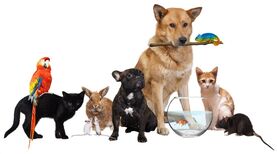
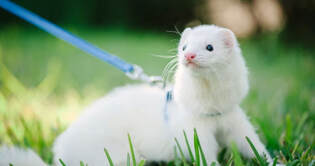
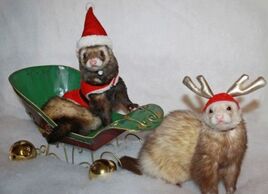

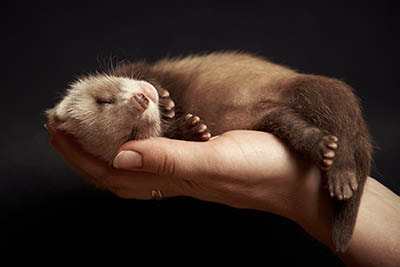
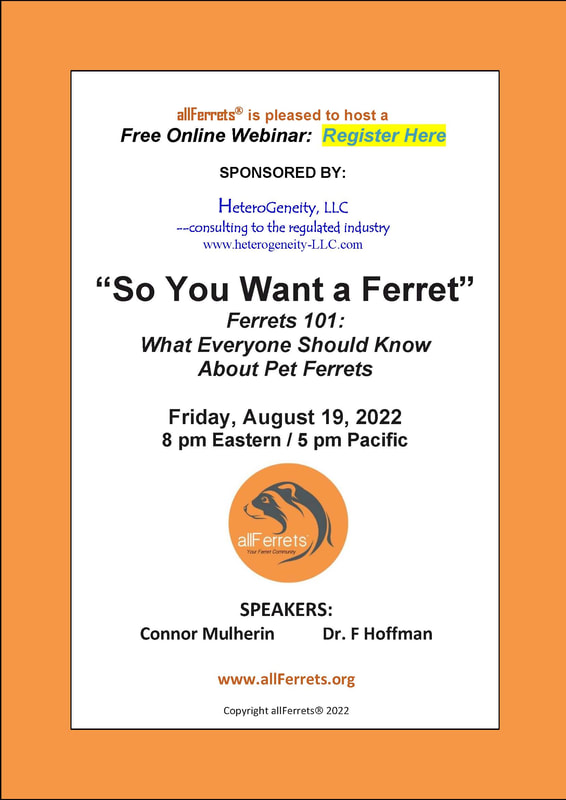
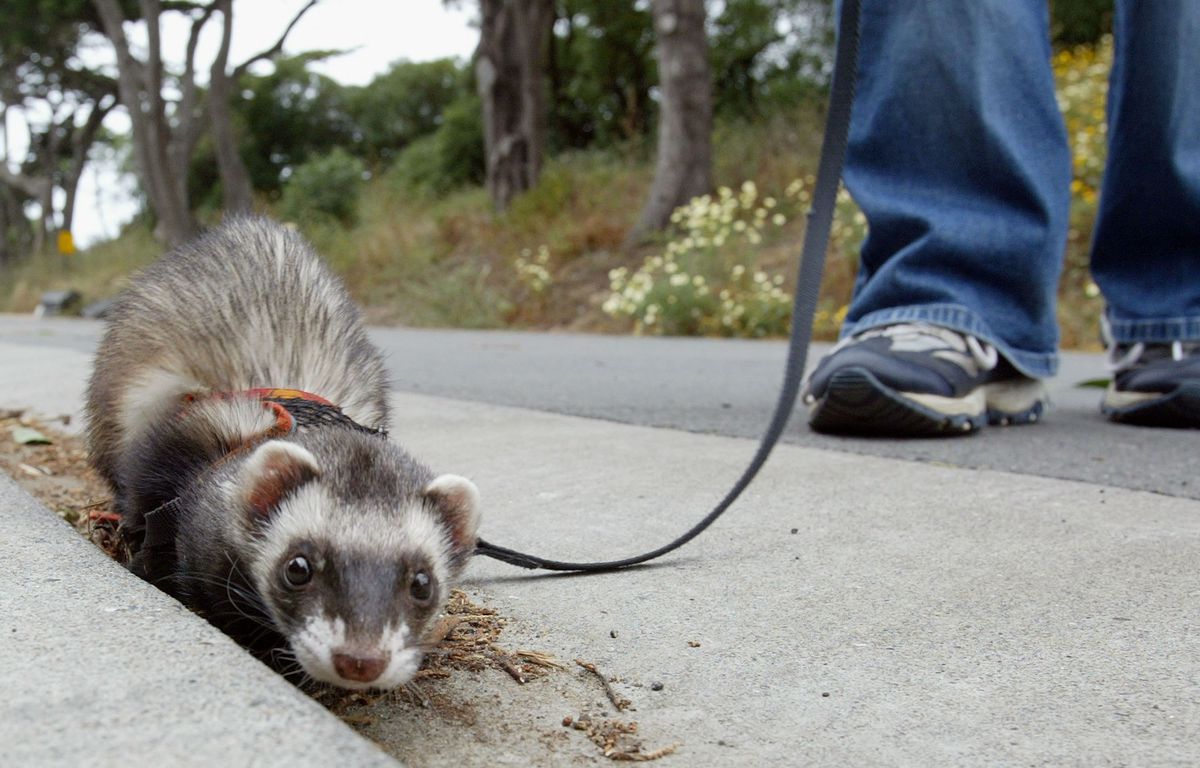
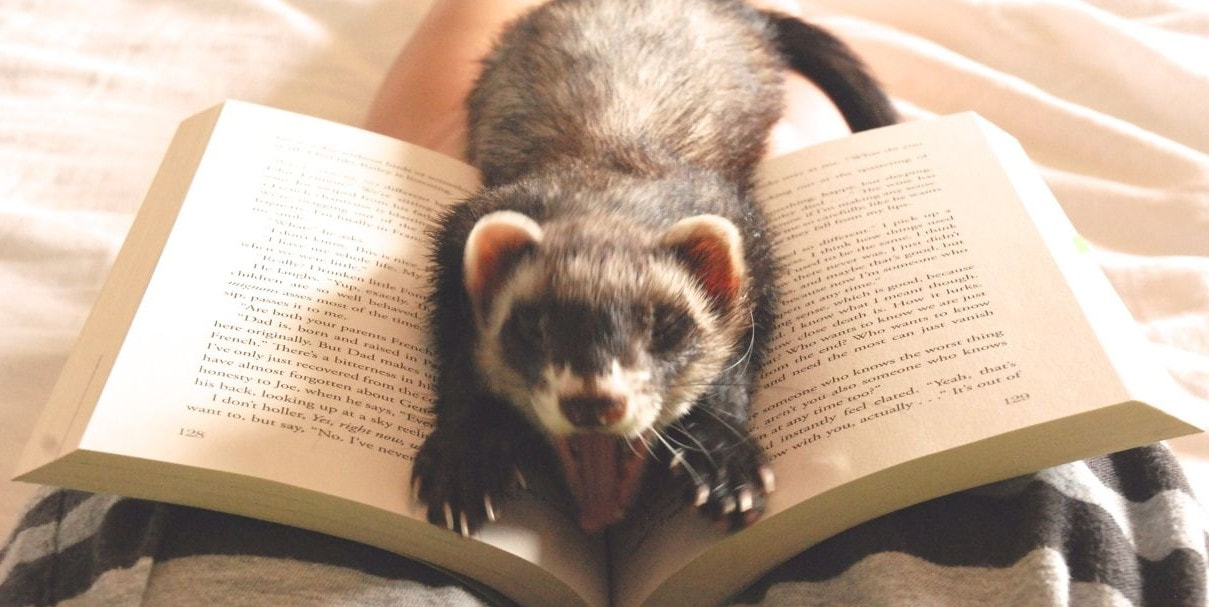
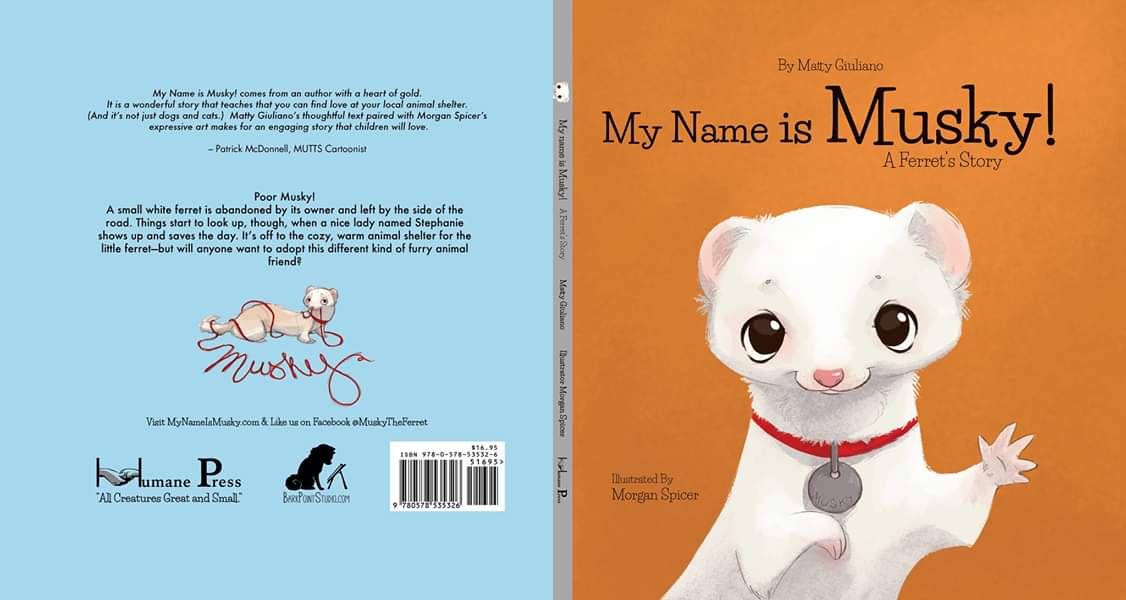
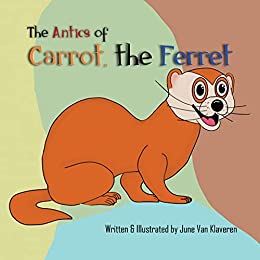
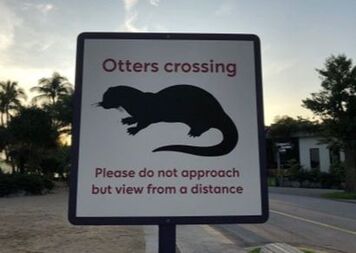


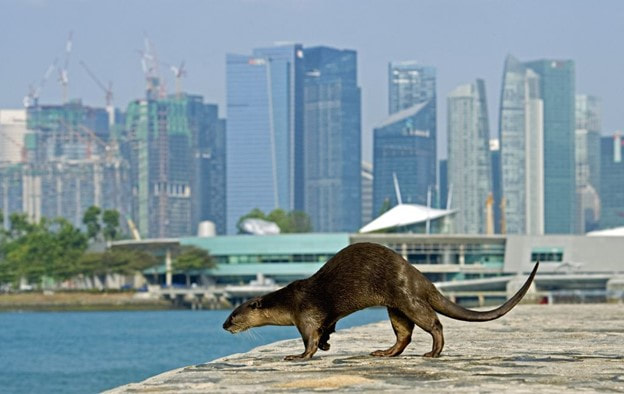
 RSS Feed
RSS Feed
